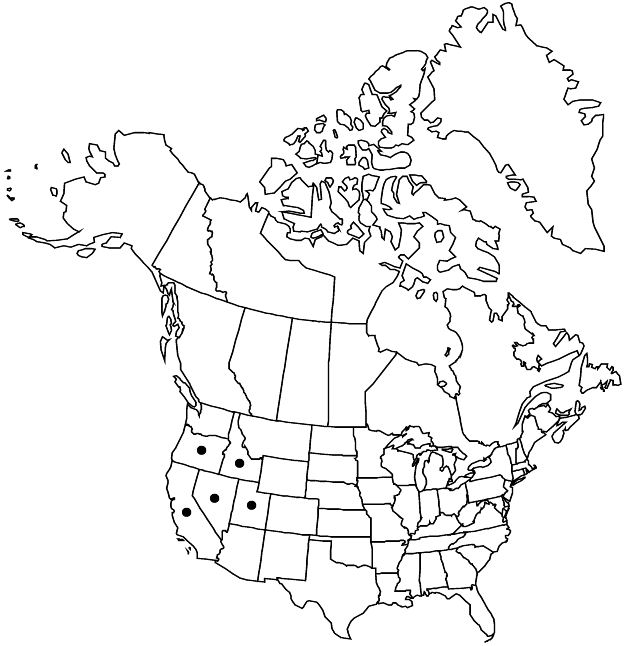Viola beckwithii
in E. M. Durand, Pl. Pratten. Calif., 82. 1855.
Plants perennial, caulescent, not stoloniferous, 2–22 cm. Stems 1–3, decumbent, ascending, or erect, ca. 1/2 subterranean, glabrous or usually puberulent, on single, short, vertical, deep-seated caudex. Leaves basal and cauline; basal: 1–6 per caudex, palmately compound, ± 2-ternate or 3-ternate, leaflets 3; stipules adnate to petiole, forming 2 linear-lanceolate wings, unlobed, margins entire, apex of each wing free, acute; petiole 2–10.5 cm, usually puberulent; blade ovate to deltate, 2.4–5 × 3.5–4.5 cm, base tapered, ultimate leaflets dissected into oblong, elliptic, lanceolate, or oblanceolate lobes 1–7 mm wide, lobe margins entire, usually ciliate, apex acute to obtuse, mucronulate, surfaces usually puberulent, seldom glabrous, abaxial surface without prominent vein parallel to each margin; cauline similar to basal except: stipules linear, apex acuminate; petiole 2–5.7 cm, usually puberulent, rarely glabrous; blade 1–2.7 × 1.5–3 cm. Peduncles 1.5–10.6(–15.7) cm, usually puberulent, seldom glabrous. Flowers: sepals lanceolate, margins eciliate, auricles 0.1–1 mm; petals dark reddish violet on both surfaces, lower 3 usually lilac, rarely white or whitish, lateral 2 bearded, with yellow patch basally, dark reddish violet-veined, lowest 10–22 mm, with yellow patch, dark reddish violet-veined, spur whitish or yellowish, tinged purple, gibbous, 0.5–2 mm; style head bearded; cleistogamous flowers absent. Capsules oblong-ovoid, 7–12 mm, glabrous. Seeds brown, 3–4 mm. 2n = 24.
Phenology: Flowering Mar–May.
Habitat: Dry or moist places, among shrubs or beneath pines
Elevation: 900–2700 m
Distribution

Calif., Idaho, Nev., Oreg., Utah.
Discussion
In some populations of Viola beckwithii, the three lower petals are white with a yellow area proximally (V. B. Baird 1942). Leaves have been described as palmately biternate or triternate (L. Abrams and R. S. Ferris 1923–1960, vol. 3), ternately decompound into linear segments (C. L. Hitchcock et al. 1955–1969, vol. 3), palmately three-parted then bipinnately parted into ultimate linear or spatulate segments (P. A. Munz 1959), and palmately about three times three-parted into linear or spatulate-linear segments (W. L. Jepson 1951). Some populations in northern California are nearly or completely glabrous, which M. S. Baker recognized as var. glabrata.
Viola beckwithii is reported to hybridize with V. utahensis (G. Davidse 1976). Observed pollinators of V. beckwithii in Utah include Apis mellifera Linnaeus and Anthophora ursina Cresson (Davidse).
When Cottam described Viola bonnevillensis, he suggested that it could be a hybrid between V. beckwithii and V. utahensis, and G. Davidse (1976) concurred. The type specimen of V. bonnevillensis (Cottam 7067, UT) was examined by R. J. Little. Because no similar forms are known to have been collected since 1939, it is presumed that this taxon is a hybrid.
Selected References
None.